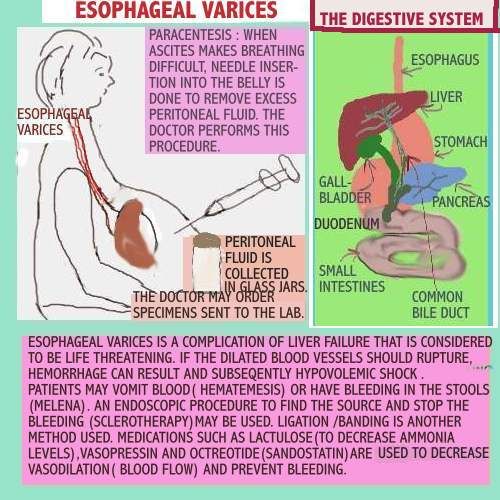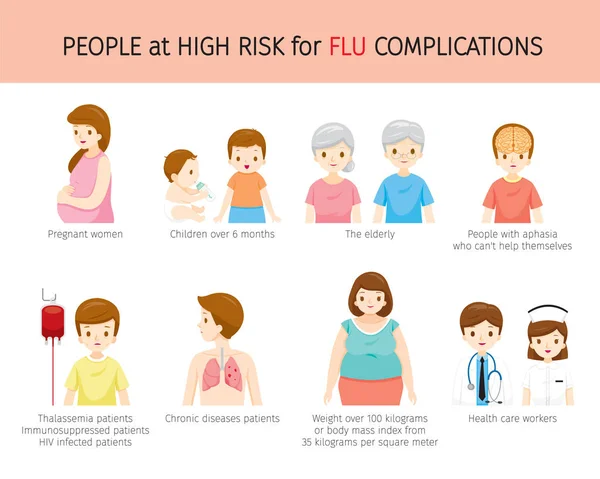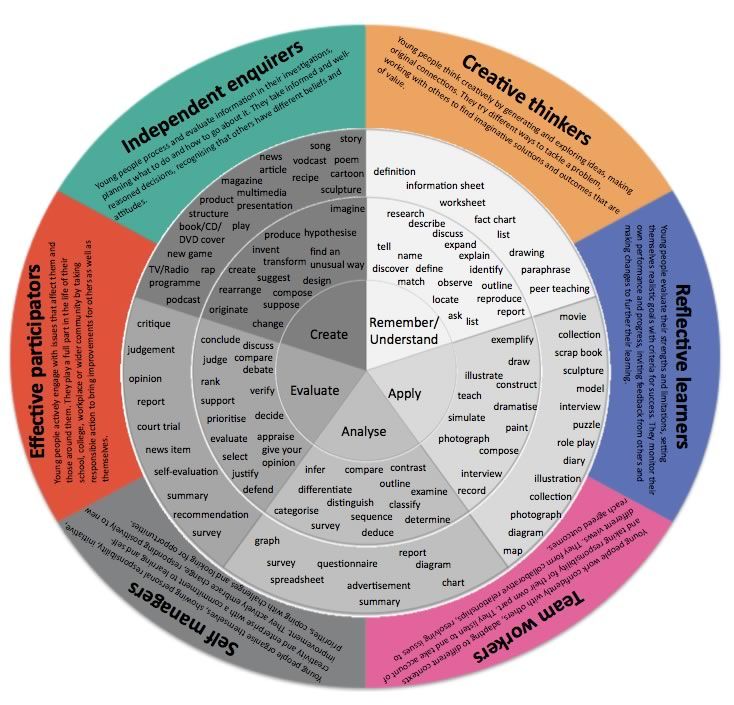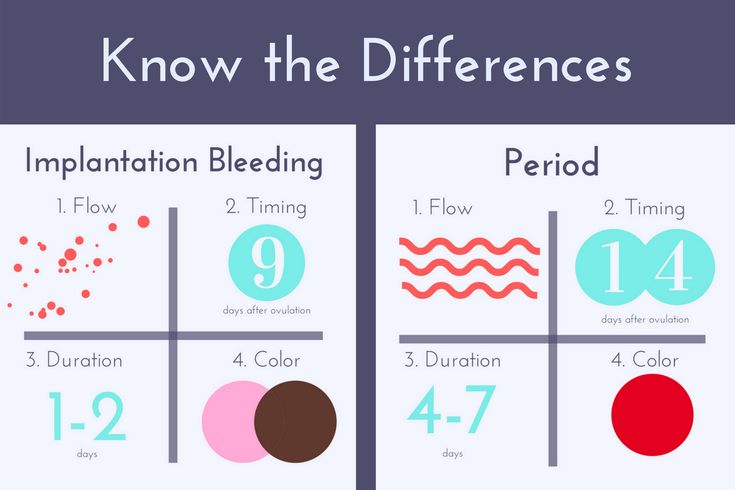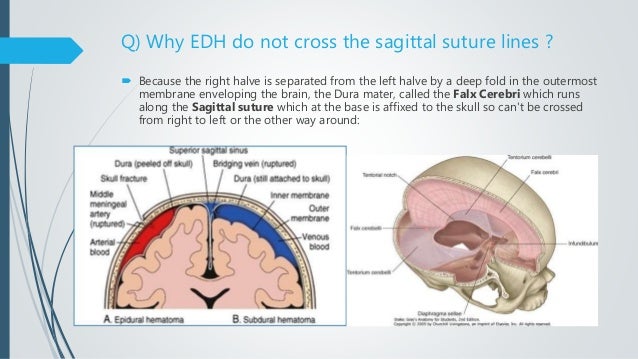Blood pressure and nose bleeding
Are Nosebleeds a sign of high blood pressure
High blood pressure is a condition that affects millions of adults all over the world. Also known as ‘hypertension,’ it can be challenging to deal with and may put someone at risk of developing further life-threatening conditions, such as a stroke or a heart attack. There remains a lot of debate in the medical world about the relationship of nosebleeds to high blood pressure - in particular, whether someone who regularly has nosebleeds might be more at risk.
What is high blood pressure?
Simply defined, it is a blood pressure reading higher than 130/80 millimeters of mercury (mm Hg). Stage 2 hypertension is defined as a blood pressure greater than 140/90 mm Hg. It is often experienced as a sudden spike in blood pressure (a hypertensive crisis) that can mean you need immediate medical help to avoid conditions such as kidney damage, stroke, eye damage or pulmonary edema. High blood pressure is a very difficult condition to diagnose, as it’s often not obvious until there is hypertensive crisis, by which point it may then be too late. If high blood pressure is unnoticed and becomes chronic then it can be the trigger for heart failure, a heart attack or stroke. There is a simple test available that will give you information on whether this is a risk for you.
What about high blood pressure and nosebleeds?
There is no direct link between nosebleeds as a sign of high blood pressure - hypertension itself doesn’t cause nosebleeds unless there is a hypertensive crisis. However, the two do often happen in parallel. This is because high blood pressure affects the blood vessels and this may cause blood vessels in the nose to be more vulnerable to damage - and to bleed more. There has been research looking at the connection between nosebleeds and high blood pressure. One Korean study focused on the risk of nosebleeds for people with high blood pressure and found that those with hypertension tended to have an increased risk of nosebleeds that required medical attention, compared to people with no evidence of hypertension.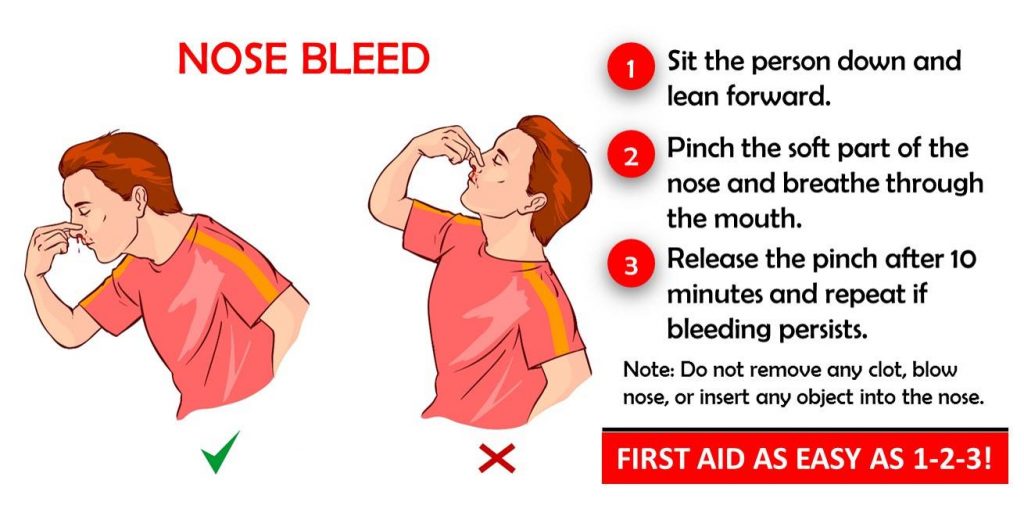
Why should you not ignore nosebleeds?
We all get nosebleeds from time to time but it’s worth getting them checked out if they are happening more regularly and when they last for longer than 20 minutes. There are lots of reasons why you might be having a nosebleed and most of them are not life-threatening. This could be anything, from getting a foregin object stuck in the nose to allergies or an injury. There are also some conditions that may increase the frequency of nosebleeds, including hemophilia, alcoholism and cancer - these are obviously more serious. Nasal sprays, Vitamin E supplements and non-steroidal anti-inflammatory drugs like ibuprofen can also contribute to nosebleeds occurring. Because there are so many different reasons why a nosebleed might be happening, a good rule of thumb is to wait 20 minutes and if you’re still bleeding seek some medical support.
Nosebleeds aren’t a sign of high blood pressure but they can result from a hypertensive crisis. If you have any concerns, make an appointment to get some help.
Harley Street is the UK's foremost private medical centre which is dedicated to providing high-quality care for your ear, nose, throat, head & neck, and balance-related disorders. Find out more information on how Harley Street ENT can help you here.
High Blood Pressure And Nosebleeds: What You Need to Know
Most everyone experiences a nosebleed at least once in their life.
Most of the time, even if you don’t know the cause, you may not be very concerned. But people who have high blood pressure often wonder if a bloody nose is a sign of something serious.
It’s natural to speculate about a possible connection between high blood pressure (a.k.a. hypertension) and nosebleeds.
However, most of the time, the two are unrelated and there’s no need for concern.
To help you understand when a nosebleed may be linked to hypertension, in this article, I’ll discuss high blood pressure, if it causes bloody noses, and when to see a doctor about recurring nosebleeds.
What Is High Blood Pressure (Hypertension)?
To understand hypertension, you first need to understand blood pressure.
This term refers to the pressure your blood puts on your artery walls as it flows through your body. Blood pressure depends on how much blood the heart pumps and how narrow the arteries are.
If your arteries are stiff or narrow, there will be more resistance to blood flow, leading to higher blood pressure.
Blood pressure is measured with two numbers:
- Systolic blood pressure: The “top” number, this measures the pressure in the arteries when the heart beats.
- Diastolic blood pressure: The “bottom” number, this is the pressure in the arteries when the heart rests between beats.
Blood pressure is read as the systolic number “over” the diastolic number.
A systolic blood pressure less than 120 mm Hg and diastolic blood pressure less than 80 mm Hg is considered normal blood pressure.
A single blood pressure reading showing raised blood pressure does not necessarily mean that you’re hypertensive. High blood pressure is a medical condition in which blood pressure is persistently higher than 130/80 mm Hg.
High blood pressure increases the risk of heart diseases like coronary artery disease, stroke, heart attack, and heart failure.
Lifestyle changes and sometimes prescription blood pressure medication can help lower or manage high blood pressure.
Symptoms
High blood pressure rarely shows any noticeable symptoms, which is why it’s important to have a healthcare provider check your blood pressure on a regular basis.
Although some people report that high blood pressure makes them feel tired, many things can cause fatigue, so don’t jump to conclusions if you’re sleepier than normal.
Causes
Most people who have high blood pressure have primary hypertension. This condition develops gradually, and an underlying cause cannot be identified.
Other people have secondary hypertension.
This condition happens more suddenly and occurs due to underlying health conditions, certain medications, or illegal drugs, including:
- Kidney disease
- Obstructive sleep apnea
- Adrenal disease
- Thyroid problems
- Birth control pills
- Non-steroidal anti-inflammatory agents (NSAIDs)
- Decongestants
- Cocaine
- Amphetamines
Concerned about high blood pressure? Chat with a doctor using K Health.
Get StartedCan High Blood Pressure Cause Nosebleeds?
High blood pressure is not usually a direct cause of nosebleeds, but some research links the two.
One study found that, compared to people with normal blood pressure, those who have hypertensive have a greater risk of nosebleeds that may require medical attention.
Another study suggested that hypertension is not usually the cause of a bloody nose, but it can make nosebleeds harder to control.
Research only directly links nosebleeds to a hypertensive crisis.
A hypertensive crisis happens when systolic blood pressure rises to 180 mm Hg or higher and/or diastolic blood pressure rises to 120 mm Hg or higher. This can lead to a stroke, heart attack, or damage to the kidneys, brain, or eyes.
A hypertensive crisis is a medical emergency that requires urgent medical care. Call 911 or head to the emergency room if you think you’re having a hypertensive crisis.
Other symptoms of a hypertensive crisis include:
- Severe chest pain
- Severe headache
- Confusion
- Shortness of breath
- Nausea
- Vomiting
- Change in vision
- Back pain
- Numbness/weakness
- Difficulty speaking
Nosebleeds are very common. Some of the most common causes of nosebleeds are nose picking and colds.
Other causes of nosebleeds include:
- Heavy sneezing
- Inserting objects into the nose
- Trauma/injury
- Allergic and nonallergic rhinitis
- Dry air
- Certain medications like aspirin, warfarin, and non-steroidal anti-inflammatory drugs (NSAIDs)
- Cocaine
- Alcoholism
- Deviated septum
- Infections
- Tumors
Concerned about high blood pressure? Chat with a doctor using K Health.
 Get Started
Get Started When to See a Doctor
Only 10% of nosebleeds need medical attention; most of the time, the bleeding stops on its own or with minimal home care. See a doctor for nosebleeds if:
- You had a severe injury to your face or head
- There’s an object stuck in your nose
- The nosebleed doesn’t stop after applying direct pressure for 20 minutes
- You have trouble breathing
- You’re vomiting and gagging
- You have frequent nosebleeds
How K Health Can Help
Did you know you can get affordable primary care with the K Health app? Download K to check your symptoms, explore conditions and treatments, and if needed, text with a doctor in minutes. K Health’s AI-powered app is HIPAA compliant and based on 20 years of clinical data.
Frequently Asked Questions
Are nosebleeds a common symptom of high blood pressure?
Nosebleeds are not a common symptom of high blood pressure, although high blood pressure may make regular nosebleeds harder to control.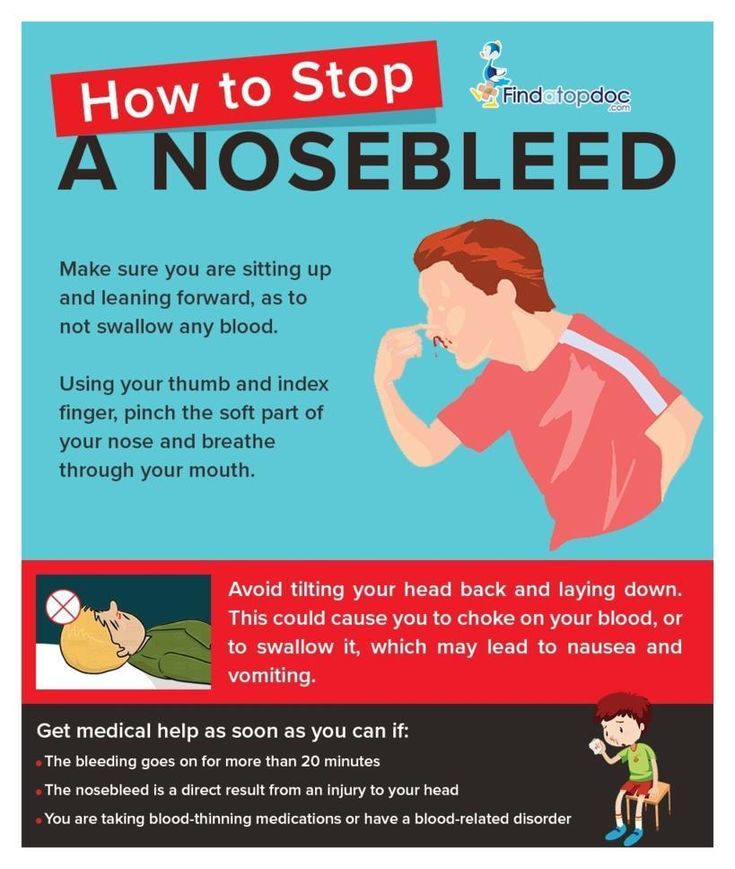
How can you tell if a nosebleed is due to high blood pressure?
The average nosebleed isn't caused by high blood pressure. However, a hypertensive crisis can cause a nosebleed. In a hypertensive crisis, blood pressure readings rise above 180/120 mm Hg. During a hypertensive crisis, some people experience chest pains, trouble breathing, and difficulty speaking.
What is the most common cause of nosebleeds?
Nose picking and colds are the most common causes of nosebleeds.
K Health articles are all written and reviewed by MDs, PhDs, NPs, or PharmDs and are for informational purposes only. This information does not constitute and should not be relied on for professional medical advice.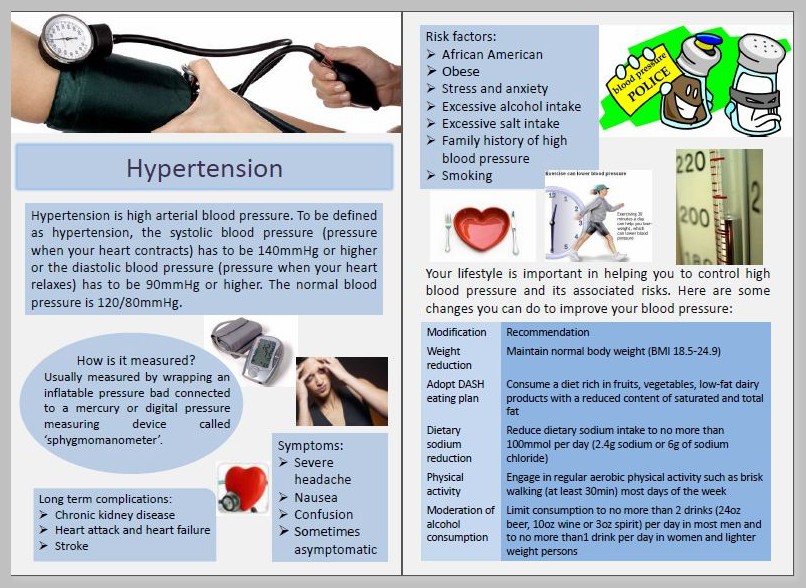 Always talk to your doctor about the risks and benefits of any treatment.
Always talk to your doctor about the risks and benefits of any treatment.
K Health has strict sourcing guidelines and relies on peer-reviewed studies, academic research institutions, and medical associations. We avoid using tertiary references.
-
Association of Hypertension With the Risk and Severity of Epistaxis. (2020).
https://pubmed.ncbi.nlm.nih.gov/32910190/ -
Epistaxis.
 (2021).
(2021).
https://www.ncbi.nlm.nih.gov/books/NBK435997/ -
Hypertension Crisis. (2010).
https://pubmed.ncbi.nlm.nih.gov/20504242/ -
Relationship Between Epistaxis and Hypertension: A Cause and Effect or Coincidence? (2014).
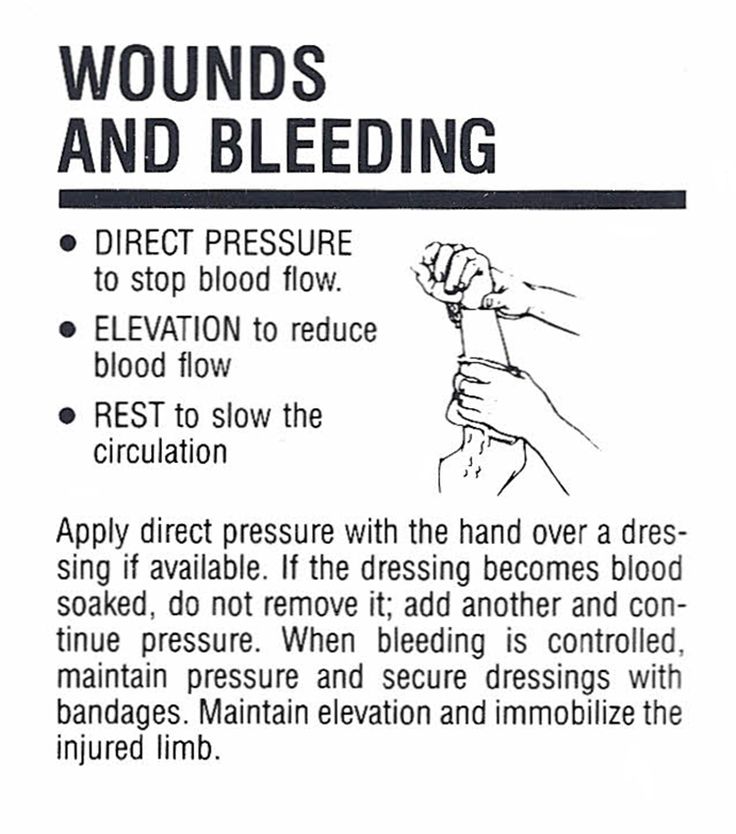
https://www.ncbi.nlm.nih.gov/pmc/articles/PMC4392352/ -
Serious Spontaneous Epistaxis and Hypertension in Hospitalized Patients. (2011).
https://www.health.harvard.edu/a_to_z/nosebleed-epistaxis-a-to-z
Epistaxis: description of the disease, causes, symptoms, cost of treatment in Moscow
When the integrity of the wall of a blood vessel is broken, nosebleeds, or epistaxis, appear. Nosebleeds can occur in both adults and children. The exception is infants who have not reached the age of two. After two years, the activity of the baby increases, which can provoke injury. Also, the child often gets sick with a cold, because of his curiosity, he gets his finger into the nasal cavity, which can cause frequent nosebleeds.
Nosebleeds can occur in both adults and children. The exception is infants who have not reached the age of two. After two years, the activity of the baby increases, which can provoke injury. Also, the child often gets sick with a cold, because of his curiosity, he gets his finger into the nasal cavity, which can cause frequent nosebleeds.
Why does
appear The existing causes of nosebleeds in adults are divided into two types. The first type includes local processes:
- Dystrophic change in the nasal mucosa. This occurs with an atrophic form of rhinitis, as well as when the nasal septum is curved.
- Various injuries of the nose and intranasal structure. Trauma can be industrial, domestic, road. This also includes trauma to the mucosa, when a foreign body enters the nasal cavity, an operation is performed, nasogastric sounding, nasotracheal intubation, catheterization, puncture of the sinuses.
- If you inhale hot vapour, caustic substance, gas.
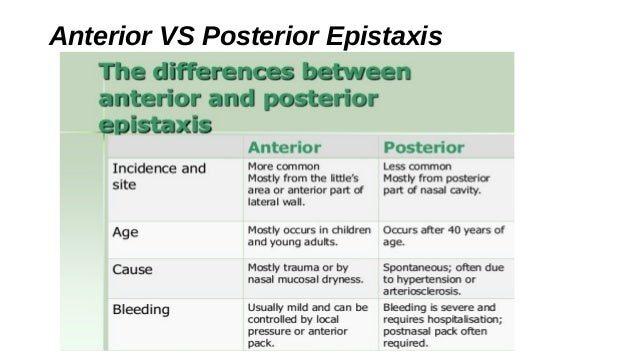
- The presence of neoplasms in the nasal cavity (angioma, malignant tumor, granuloma). Cysts or neoplasms in the nose are accompanied by nasal congestion, shortness of breath, headache. There is an intense release of blood, in some cases with an admixture of a clear liquid. If the tumor is located on the adrenal glands, a person's blood pressure rises to 200 units, which can cause frequent nosebleeds in adults.
- When the mucosa overflows with blood. This is facilitated by acute or chronic rhinitis, sinusitis, adenoiditis.
Common causes of epistaxis include:
- Hormonal imbalance (at puberty, during pregnancy).
- In diseases of the cardiovascular system. This is the presence of hypertension, heart disease, vascular anomaly, when a person has increased blood pressure in the head and neck vessels, atherosclerosis. Congenital heart defects provoke children's heart failure.
 Blood is released for no longer than three to four minutes. Due to increased capillary and venous pressure, the blood has a dark color. Isolation begins spontaneously, with no physical or moral tension. The nose bleeds several times in 7 days.
Blood is released for no longer than three to four minutes. Due to increased capillary and venous pressure, the blood has a dark color. Isolation begins spontaneously, with no physical or moral tension. The nose bleeds several times in 7 days. - In pathology caused by sudden changes in barometric pressure. This happens if a person rises to a great height (alpinists and pilots), quickly descends to a depth (divers).
- Coagulopathy. This is a painful condition in which there is a violation of blood clotting.
- Hemorrhagic diathesis.
- Disease of the circulatory system.
- Avitaminosis.
- When body temperature is elevated due to an infectious disease.
- If heat stroke or sunstroke occurs, overheating.
In addition to the above, frequent nosebleeds in adults cause regular stress, overwork, hypovitaminosis. To eliminate bleeding from the nose, you should fully relax, follow a diet rich in vitamins and minerals. There are cases when the cause of frequent nosebleeds in adults is leukemia, a liver disease that promotes the production of vitamin K. If blood clotting is impaired, there is a change in the analysis of urine and blood, bruising on the skin, and a rash.
To eliminate bleeding from the nose, you should fully relax, follow a diet rich in vitamins and minerals. There are cases when the cause of frequent nosebleeds in adults is leukemia, a liver disease that promotes the production of vitamin K. If blood clotting is impaired, there is a change in the analysis of urine and blood, bruising on the skin, and a rash.
The cause of severe nosebleeds is tuberculosis. With bacterial reproduction in the nasal cavity, the formation of tuberculous granuloma occurs. It contributes to the violation of the integrity of soft tissue, cartilage, mucous membranes. The discharge is bright red, sometimes with an admixture of mucus or pus. Blood flows out no longer than three minutes. In addition, among the symptoms of tuberculosis, there is excessive sweating at night, lethargy, and a strong cough.
Location
The section of the nasal cavity is the determining factor for whether bleeding is anterior or posterior.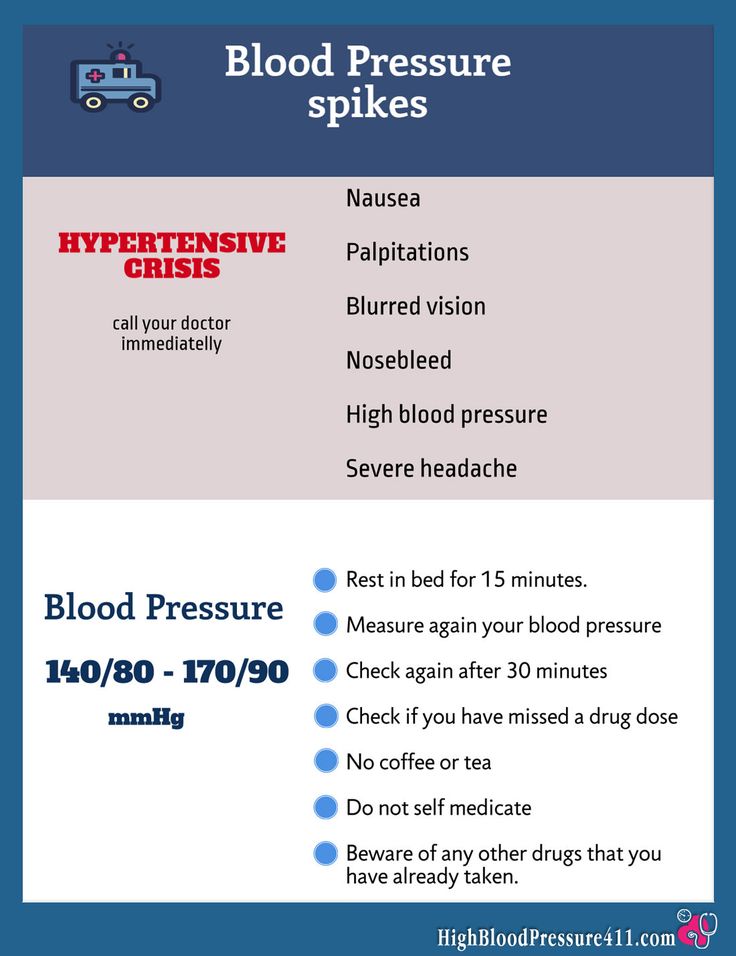 The nature of the anterior bleeding does not differ in intensity, it is not dangerous to human health. If a disease of the circulatory system is not diagnosed, it is able to stop arbitrarily, or with the application of first aid rules. If large vascular trunks located on the wall of the deep part of the nasal cavity are damaged, posterior blood loss begins. It can grow rapidly, as a result, there is a danger to human health and life. This type of bleeding is difficult to stop with home remedies, so you should seek qualified help, which is based on special treatment. Minor blood loss is considered if it is from 10 to 30 ml, light - up to 400 ml, medium - from 700 to 1200 ml, severe - more than 1500 ml.
The nature of the anterior bleeding does not differ in intensity, it is not dangerous to human health. If a disease of the circulatory system is not diagnosed, it is able to stop arbitrarily, or with the application of first aid rules. If large vascular trunks located on the wall of the deep part of the nasal cavity are damaged, posterior blood loss begins. It can grow rapidly, as a result, there is a danger to human health and life. This type of bleeding is difficult to stop with home remedies, so you should seek qualified help, which is based on special treatment. Minor blood loss is considered if it is from 10 to 30 ml, light - up to 400 ml, medium - from 700 to 1200 ml, severe - more than 1500 ml.
How to determine the source of bleeding
To determine what type of bleeding is (anterior or posterior), the patient is examined by a doctor. He asks if there is a bloody taste in the mouth, there is a runoff in the throat, if there is vomiting and expectoration with blood.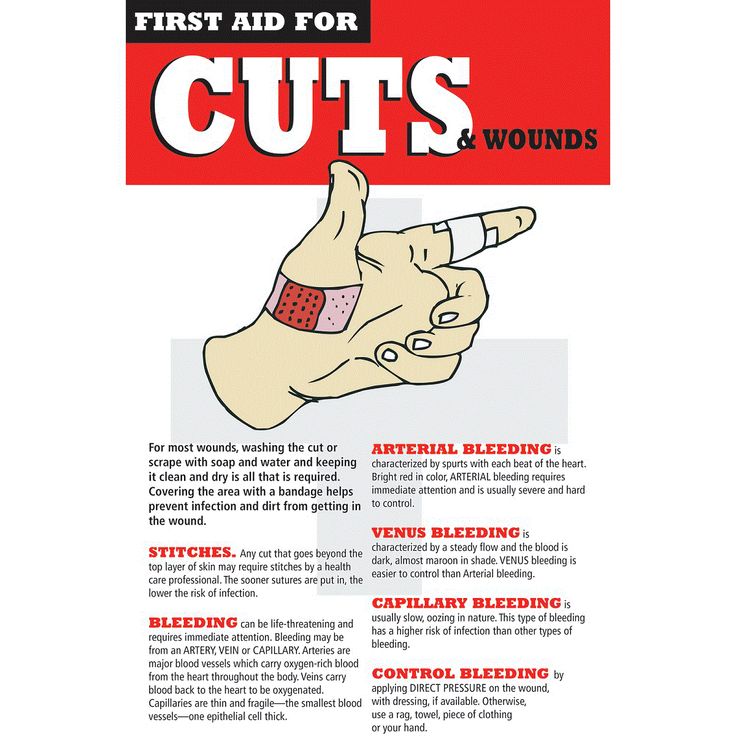 The patient talks about when the symptom appeared, notes the presence or absence of nasal injuries. The doctor finds out what comorbidities a person has (blood pressure rises, kidney or vascular disease, constant medication). The patient specifies whether he has frequent nosebleeds or not, indicates their duration, intensity, age when it started.
The patient talks about when the symptom appeared, notes the presence or absence of nasal injuries. The doctor finds out what comorbidities a person has (blood pressure rises, kidney or vascular disease, constant medication). The patient specifies whether he has frequent nosebleeds or not, indicates their duration, intensity, age when it started.
After the interview, the doctor performs a pharyngoscopy. This is a procedure when the pharynx is examined under special lighting. The process involves the use of a spatula, forehead reflector, laryngeal and nasopharyngeal mirror. With the help of such instruments, the doctor assesses the condition of the root of the tongue, the back and side walls of the pharynx, the soft palate, the palatine arches, the palatine uvula and the tonsils. The examination includes assessing the color of the mucosa, how smooth it is, whether lymphoid tissue has accumulated, and whether there is a pathological formation.
To determine why nosebleeds appeared, the treatment of which depends on the underlying cause, the doctor performs a rhinoscopy.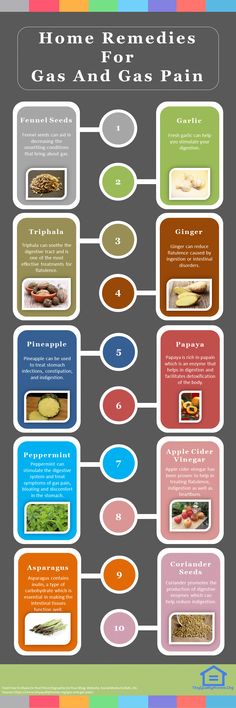 It refers to a diagnostic instrumental technique that helps to study the state of the nasal cavity. Rhinoscopy is anterior, posterior, middle. Anterior rhinoscopy is performed using a nasal mirror, posterior - with a nasopharyngeal mirror, middle - with a mirror with an elongated branch. The procedure is indicated for the diagnosis of diseases of the nasal cavity. During the middle and posterior rhinoscopy, the patient is given local anesthesia.
It refers to a diagnostic instrumental technique that helps to study the state of the nasal cavity. Rhinoscopy is anterior, posterior, middle. Anterior rhinoscopy is performed using a nasal mirror, posterior - with a nasopharyngeal mirror, middle - with a mirror with an elongated branch. The procedure is indicated for the diagnosis of diseases of the nasal cavity. During the middle and posterior rhinoscopy, the patient is given local anesthesia.
Based on how the disease proceeds, nosebleeds in a dream can be single, recurrent, recurring. Recurrent nosebleeds, the repetition of which occurs for a limited time period. They contribute to the deterioration of the general condition of a person, and require inpatient therapy. The formation of an unstable aneurysm, rupture of the ethmoid artery are the causes of such nosebleeds, treatment in adults and children is prescribed by an experienced doctor. In addition, vascular disease can be the cause. The first sign of hypertension is hemorrhage from a ruptured vessel.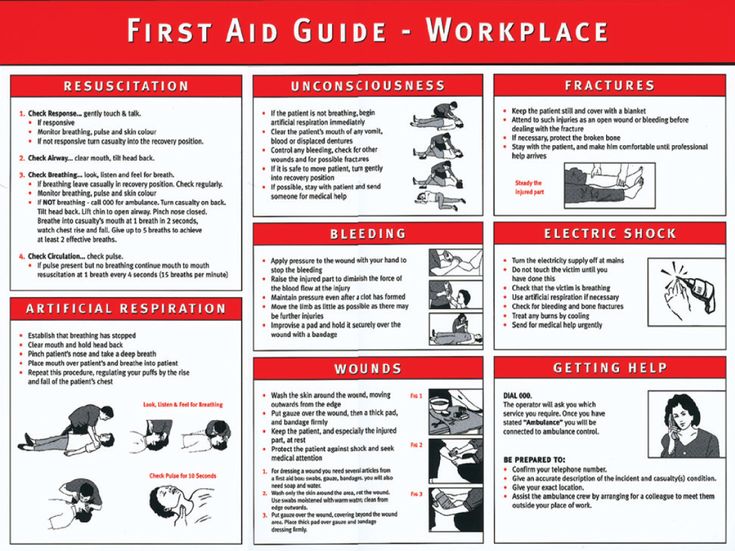 A person diagnosed with hypertension, nephrosclerosis, wrinkled kidney is at risk of recurrent bleeding.
A person diagnosed with hypertension, nephrosclerosis, wrinkled kidney is at risk of recurrent bleeding.
When this type of bleeding occurs, the development of a mental disorder begins, the signs of which are:
- Restlessness.
- Weakness all over the body.
- A person loses the landmark of time and place where he is.
- Increased heart rate.
- Panic starts.
- Blood pressure drops to a critical level.
If one of the above symptoms is present, multiple transfusions of blood substitute fluid, isotonic sodium chloride solution, erythrocyte mass, electrolytes are urgently required.
Taking medication as a cause of bleeding
The nose can bleed if the components of the drug contribute to irritation of the nasal mucosa. These drugs include nasal sprays, the use of which is necessary to get rid of allergic rhinitis, a strong inflammatory process in the nasal cavity. There are drugs that provoke impaired blood clotting (aspirin, warfarin). If blood-thinning drugs or a nasal spray have caused a nosebleed, you should contact your doctor to choose another drug.
There are drugs that provoke impaired blood clotting (aspirin, warfarin). If blood-thinning drugs or a nasal spray have caused a nosebleed, you should contact your doctor to choose another drug.
Why does the nose bleed? - GAUZ OZP City Clinical Hospital No. 8
- Post author: Press Secretary
- The entry was published: 07/24/2019
- Post category: Prevention
. As a rule, this is not dangerous and is quite understandable. But this is not always the case, since nosebleeds can be caused by quite serious reasons that you do not know about. Now we will consider what needs to be done if blood flows from the nose and in which cases it is worth contacting a specialist.
Causes of bleeding
- High blood pressure. The nose contains a large number of nerve endings and thin blood vessels that can rupture due to high blood pressure.

- Mechanical damage. Due to the fragility of the capillaries in the nose, blood can flow as a result of even a slight injury, for example, a handkerchief with a cold. Also, during a cold, blood vessels swell and may burst.
- Dry air. Now this is one of the most urgent reasons, because in winter, in the cold or in a room where the air is dry, the nasal mucosa dries up, which can also bleed from the nose.
In addition to problems in the nasal cavity, there are a number of reasons related to disorders of the whole body, which can cause bleeding. For example, with certain diseases of the cardiovascular system, hypertension, atherosclerotic lesions of the cerebral vessels, problems with blood circulation in the cervical spine, blood circulation is disturbed, resulting in increased pressure in the nasal capillaries. Thus, nosebleeds can signal serious health problems.
Also, experts note that nosebleeds for no apparent reason can be a symptom of blood clotting problems as a result of a vitamin deficiency or an overdose of drugs.